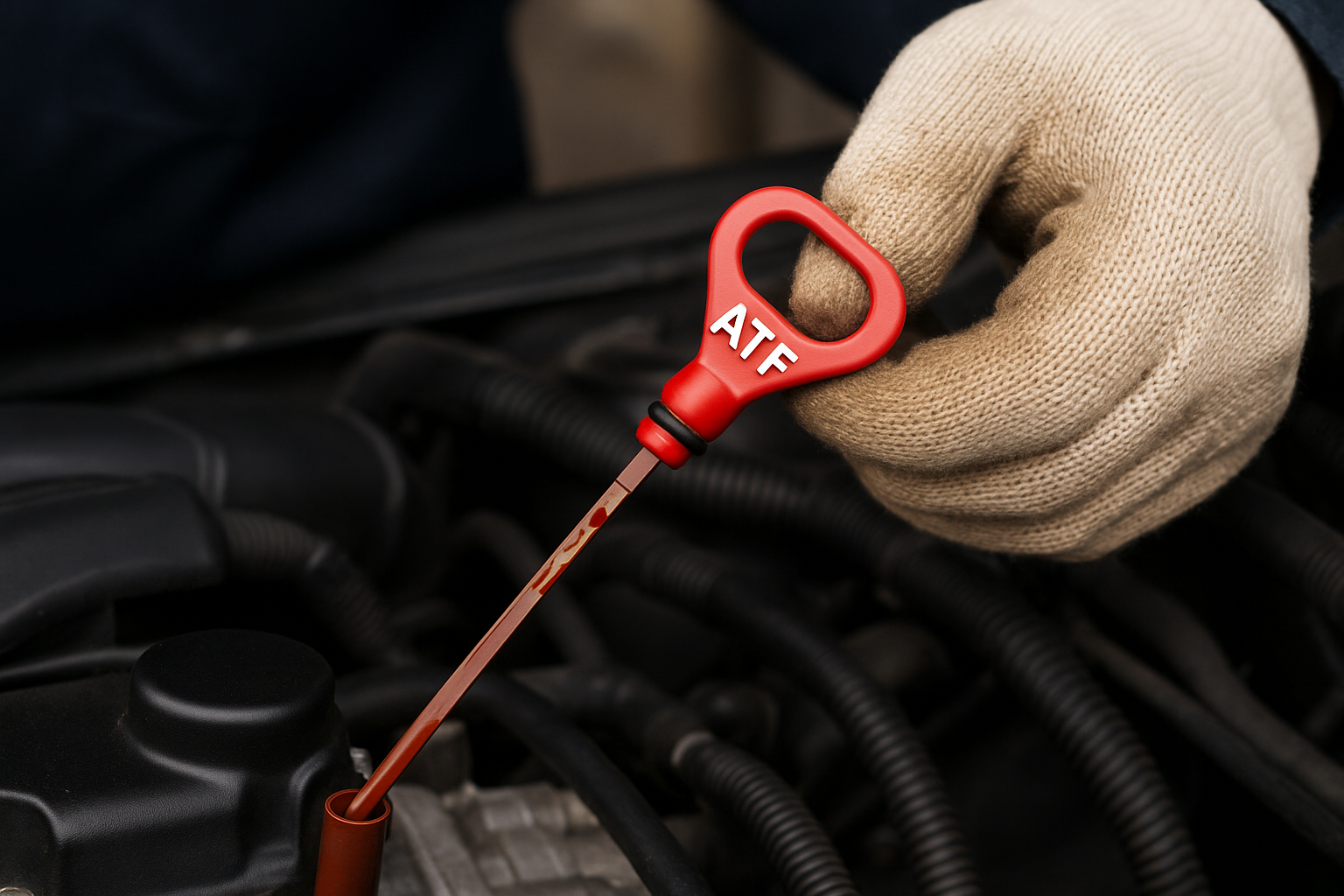Why Transmission Fluid Maintenance Matters
Automatic transmissions are complex systems relying on fluid pressure, lubrication, and cooling to function smoothly. Transmission fluid doesn’t just lubricate—it also enables gear shifts and transfers power from the engine to the wheels.
Neglecting this fluid can lead to slipping gears, overheating, and expensive repairs. Checking your transmission fluid regularly is one of the simplest yet most effective ways to ensure a long, trouble-free service life.
This guide will show you how to check automatic transmission fluid properly, when to do it, and what to look for to keep your gearbox in top condition.
Understanding the Role of Transmission Fluid
Transmission fluid serves several essential functions:
- Lubrication: Reduces friction between moving parts inside the transmission.
- Cooling: Dissipates heat generated during operation.
- Hydraulic Action: Provides the pressure needed to engage gears and clutches.
- Cleaning: Keeps internal components free of varnish and metal debris.
There are different types of automatic transmission fluids (ATF), such as Dexron, Mercon, and CVT fluid. Always refer to your owner’s manual or manufacturer’s service information for the exact specification—using the wrong fluid can cause shifting issues or even transmission failure.
When and How Often to Check Transmission Fluid
Unlike engine oil, which needs frequent changes, transmission fluid typically lasts longer. However, checking it regularly ensures early detection of leaks or degradation.
Recommended intervals:
- Monthly visual check: Look for leaks or low levels.
- Every 30,000–60,000 miles (50,000–100,000 km): Inspect fluid quality or replace it per manufacturer’s schedule.
- After heavy towing or long highway trips: Extra heat can accelerate fluid breakdown—check sooner.
Newer vehicles with sealed transmissions may not have a dipstick; in that case, inspection requires a service port and professional equipment. Always confirm your vehicle’s design before proceeding.
Step-by-Step Guide to Checking Automatic Transmission Fluid
Park Safely and Warm Up the Engine
Park on level ground and engage the parking brake. Most vehicles require the engine to be running and at operating temperature to get an accurate reading, as fluid expands when warm.
Consult your manual—some models (like certain Hondas) must be checked with the engine off.
Locate the Transmission Dipstick
Pop the hood and locate the transmission dipstick. It’s usually labeled “TRANS” or “ATF”, often with a red, yellow, or orange handle.
If your car doesn’t have a dipstick, it’s likely sealed; fluid checks and changes must be done by a technician.
Remove and Clean the Dipstick
With the engine idling (if specified), pull the dipstick out carefully. Wipe it clean with a lint-free cloth to remove old fluid.
Reinsert and Check Fluid Level
Reinsert the dipstick fully, then remove it again to check the fluid level.
You should see two marks on the stick:
- “COLD” and “HOT” zones, or
- “MIN” and “MAX” lines.
The fluid should fall within the HOT/MAX range when the transmission is warm. If it’s below the lower mark, you’ll need to add fluid.
Examine Fluid Color and Smell
Transmission fluid condition says a lot about gearbox health:
| Fluid Appearance | Condition | Action |
|---|---|---|
| Bright red, transparent | Excellent | No action needed |
| Light brown | Aging | Plan for change soon |
| Dark brown or black | Oxidized, worn | Replace fluid immediately |
| Milky or foamy | Coolant contamination | Requires professional service |
| Burnt smell | Overheated | Possible internal damage – inspect ASAP |
Tip: If the fluid smells burnt or looks opaque, changing it won’t fix internal wear—have a technician diagnose the cause.
Top Up (If Needed)
If the level is low, use a clean funnel to add the correct ATF through the dipstick tube. Add small amounts (half a cup at a time) and recheck. Overfilling can cause foaming, pressure loss, and erratic shifting.
Identifying Transmission Leaks
Low fluid is often a symptom of leakage. Common leak points include:
- Transmission pan gasket
- Output shaft seals
- Cooler line fittings
- Axle seals
You may notice red or brown fluid spots under the car. Even a small leak can cause big problems if ignored—automatic transmissions are sensitive to fluid loss.
If the transmission slips between gears, takes longer to engage drive or reverse, or the car jerks when shifting, check fluid levels immediately.
How Temperature Affects Fluid Readings
Temperature plays a critical role in getting accurate readings. Cold fluid contracts and may appear low even when full. That’s why most manufacturers specify checking when warm.
Rule of thumb:
- Check fluid after at least 15 minutes of driving.
- If using a scan tool, verify transmission fluid temperature between 85–95°C (185–203°F) for accurate readings.
Some modern vehicles display transmission temperature on the infotainment screen, which simplifies this process.
Transmission Fluid Change vs. Flush
If your fluid is dirty or smells burnt, you’ll need to replace it. There are two methods:
- Drain and Fill: Removes 30–50% of old fluid (safer for older transmissions).
- Fluid Flush: Uses a machine to replace nearly all fluid under pressure.
Caution: On high-mileage transmissions that haven’t been serviced regularly, a flush may loosen debris and cause damage. Always follow the manufacturer’s recommendation.
Common Mistakes to Avoid
- Checking when cold: Leads to inaccurate readings.
- Using wrong fluid: Each manufacturer specifies exact ATF chemistry—mixing types can cause shifting issues.
- Ignoring leaks: Even minor drips can lead to low pressure and slippage.
- Overfilling: Causes foaming and fluid aeration, reducing lubrication.
Conclusion: Keep Your Transmission Healthy with Regular Checks
Checking your automatic transmission fluid takes only a few minutes but can save you thousands in repair costs. Make it part of your monthly car care routine—just like checking your engine oil and tire pressure.
By using the correct ATF, monitoring fluid quality, and addressing leaks promptly, you’ll extend your transmission’s life and ensure smooth, reliable performance for years to come.
